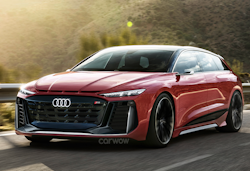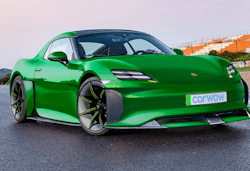Plug-in Car Grant (PiCG) explained
July 13, 2022 by carwow staff

The plug-in car grant for electric vehicles has now ended, but here’s what you could have had…
The UK Government once offered a discount grant to help drivers make to electric and plug-in cars. This discount, called the Plug-in-Car Grant (PiCG) was brought to an end in June 2022 after paying out £1.4 billion, and helping almost half a million EVs and plug-in hybrids (PHEVs) find homes.
The PiCG changed in the 11 years it was operational for, with grants becoming less generous over time. Here, we give you the rundown on its history and payments.
What was the government plug-in car grant?
At the end of its operation, the Government Plug-in Car Grant provided a £1,500 discount to brand-new electric vehicles, as long as the initial RRP (including VAT and delivery fees) was less than £32,000.
How did the plug-in car grant work?

The Plug-in Car Grant was introduced in 2011 with the aim of encouraging the uptake of electric cars and PHEVs. To take advantage of the Government’s plug-in car grant, all you had to do was buy an eligible car from new, with the grant being automatically be applied by the dealer at the point of sale.
When it first launched in 2011, the PiCG was a £5,000 discount that was applied to new EVs and PHEVS. The grant was cut to £4,500 for EVs, and £2,500 for PHEVs in 2016, while cars costing over £60,000 were made ineligible. In 2018 the EV grant dropped to £3,500 while PHEVs were no longer subject to it.
In 2020 the PiCG dropped to £3,000 and cars costing over £50,000 were made ineligible, then in March 2021 it was reduced to £2,500, and a price cap of £35,000 was introduced.
The last cut came in 2021, when the PiCG dropped to just £1,500, before in June 2022 the grant was removed entirely.
Which cars were eligible for the plug-in car grant?
Only fully-electric cars were eligible for the plug-in car grant at the end of its life in June 2022. Up until December 2020, any car that produced CO2 emissions of less than 50g/km and could travel at least 70 miles on battery power was eligible, though in practice the battery-mileage requirement meant no PHEVs were eligible.
Your new car also had to have an RRP under £32,000, VAT and delivery fee inclusive, in order to qualify.
How did you apply for the plug-in car grant?
When you buy a qualifying car, the grant was automatically applied – the dealer just applied to claim the money back after the sale.
Are any other electric car grants available?
The Electric Vehicle Homecharge Scheme (EVHS) used to provide a £350 grant to help towards the cost of home chargers for EVs, but this came to an end in April 2022. Landlords and people living in flats can still apply for assistance though.
Grants are available for the following electric vehicles:
- Small electric vans (EG Citroen e-Berlingo) – max grant: £2,500
- Wheelchair accessible vehicles (EG a converted Peugeot e-Rifter) – max grant: £2,500
- Electric motorcycles (EG SEAT MO e-Scooter) – max grant: £500
- Electric mopeds (EG Piaggio One) – max grant: £150
- Large vans (EG Ford E-Transit) – max grant: £5,000
- Taxis (EG LEVC TX) – max grant: £7,500
Small and large electric trucks can also get grants (up to £16,000, and £25,000 respectively), but these are limited in numbers, and the Department for Transport needs to be contacted directly if you are interested.
FAQs: Plug-in Car Grant
How long did the plug-in car grant run for?
The PiCG started in 2011, and ended in June 2022.
Could you claim the government plug-in car grant after buying an electric car?
No, it had to be applied by the selling dealer.
Did the government plug-in car grant apply to used cars?
The government plug-in car grant only ever applied to brand-new cars, so you couldn’t claim a grant towards a second-hand vehicle.
Were hydrogen cars eligible for the government plug-in car grant?
Hydrogen cars are zero emission vehicles at the tailpipe, so were treated as EVs were, and were eligible for the grant.















